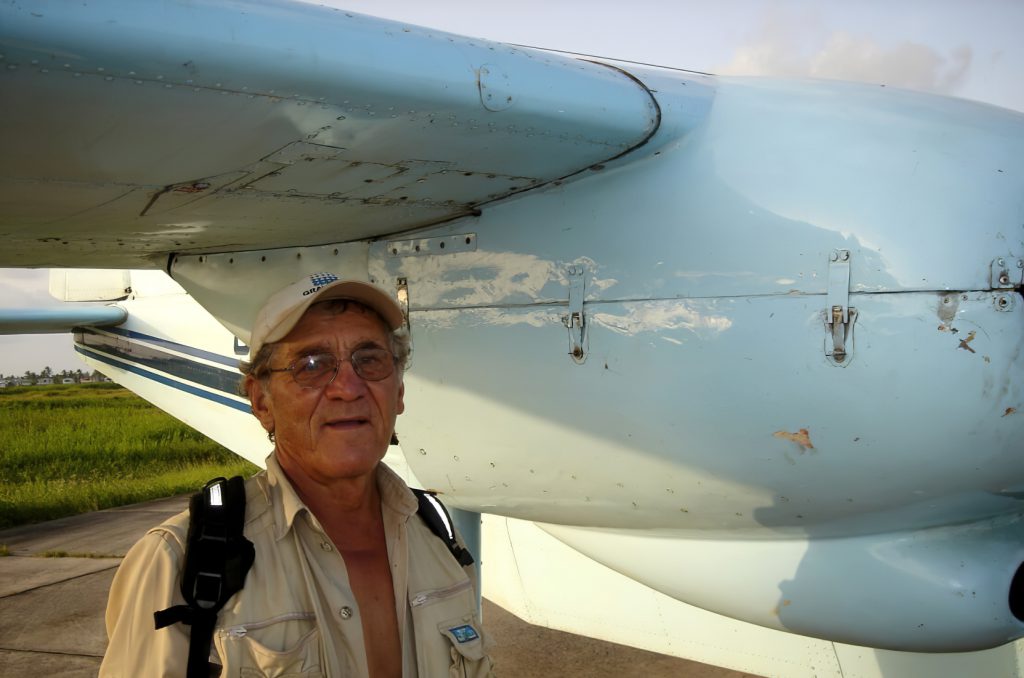Dr. Edward Schiller: Amazon geologist, gold broker and medicine man

PERSONALITY PROFILE
Like many geologists, Dr. Ed Schiller had his share of adventures. He lived and worked as an exploration geologist in the US, Australia, Brazil and Colombia and explored and visited some 25 different countries over his 50 plus year career.
His claim to fame was his involvement with the discovery of the Ekati diamond mine in the Northwest Territories in 1991 where he was in charge of the drilling campaign that intersected the first diamond-bearing kimberlite pipe. This discovery caused a massive diamond staking rush in the Northwest Territories and led to the discovery of other clusters of kimberlite bodies that became mines such as the Diavik diamond mine and created a new Canadian diamond industry.
Ed is a contributing editor to Resource World and currently retired in Kelowna and aging like fine wine having recently sold his vineyard. He is an avid rock hound and mineral collector. He received his Ph.D in Mineralogy from the University of Utah in 1993.
“In the 1980s I was involved in a gold exploration program in the Amazon region of Brazil for a major international mining company,” Ed recounted. “I was based in a remote camp about 200 km south of the town of Santrem on the Amazon River halfway between Belem and Manaus where the Tapojos River drains into the Amazon. The camp operated in support of some 100 prospectors or garimpeiros (artisarial miners) who worked individual claims extracting alluvial gold by rudimentary methods (both sluice boxes and mercury dissolution methods and some by hand panning).
“Our program was designed to systematically surface sample in search for a mineable gold deposit using the garimpeiros efforts and our own sampling methods. Access to the garimpeiros was solely by aircraft from Santrem to an airstrip just long enough for a Cessna 170 to land on. The camp and airstrip owner traded gold nuggets (pepitas in Portuguese) for merchandise to support the garimpeiros (food, fuel and cachaca – a famous Brazilian sugar distilled liquor). “Typical to many Brazilian garimpeiros, there were brothels whose women traded services for gold nuggets. Almost all of the workers were single and some desired weekend company. The camp was the local store. There was the airstrip but no streets or avenues. The brothels were tents located along the airstrip. My own tent was nearby. Gold nuggets were of no value to the girls and I happened to recognize a business opportunity.
“They wanted money and because I appreciated the future value of gold I bought their nuggets. I would fly from the camp to Santrem to ship out samples for analysis as part of my exploration program. The girls could not afford to fly out so I became the local gold broker. I had a gold scale, or balance, and bought all forms of gold from fine gold to nuggets based on London spot prices at that time of about US$300 an ounce with payment in Cruzeiros. I still have a couple of the nuggets hidden in my home safe. In 1994, the Cruzeiro was renamed the Real and is now the country’s currency. This gold purchase arrangement worked out well for everyone.
“I had a crew of about 20 samplers and was responsible for their well-being. Living in the jungle distant from any medical or pharmaceutical source, I became the local M.D. and pharmacist. My medical supplies comprised band aids, aspirin and M&M candies and a few other items. When a patient appeared in my tent complaining about some aliment my remedy was usually a combination of two aspirins and one yellow and one brown M&M. Some cures took place (a miracle) and I did not lose one patient.”

Ed is a great friend and Geo Mentor. He deserves the greater recognition that you have provided. Onward!!!